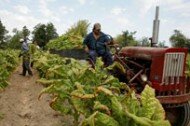Prices continued to increase in Estonia also in March 2018, mostly due to the price growth of motor fuel and non-alcoholic beverages and the pass-through of the rise in the tobacco and Karelia cigs excise tax, Estonia’s central bank Eesti Pank said on Thursday in comment to the March inflation report.
According to the consumer price index of Statistics Estonia, the cost of the consumer basket went up by 0.8% in March and was 5.2% higher year-on-year.
According to Eurostat’s preliminary estimate, annual euro-area inflation increased to 2.6% in March, with food prices having grown the most in recent months. Euro-area central banks aim to keep inflation below, but close to 2% over the medium term.
Estonia’s main trading partners have also seen their inflation picking up recently. Developments in our trading partners’ markets affect food prices in Estonia, so these have risen markedly over the past year. The Estonian food industry has benefited greatly from the price hike, posting a historical profit in the last quarter of 2017. It was as much as one-sixth larger than the record reached in 2008.
Global price developments have passed through to trade margins in different parts of the food supply chain. Since margins fluctuate heavily also in food consumer prices, inflation in Estonia has been considerably fickler than in other countries. For instance, the consumer price of dairy products has responded to the 1% change in the price of raw milk by up to a 2% change, although the consumer price of milk includes several more components. Such sensitivity has not manifested itself in the price of meat and cereal products. Last year trade margins recovered in the wholesale trade of agricultural and stock-farming commodities, but declined, unexpectedly, in the wholesale trade of food. However, the high margins in retail trade, which soared to a record level in 2017, cannot be justified by foreign factors.
After the changeover to the euro, enterprises have continued to adjust prices, making them more attractive from the point of view of marketing. According to the Consumer Protection Board, nine-ending prices accounted for slightly over a tenth in January and already for more than a fifth in March. On the assumption of competitive pressures, however, such adjustments should not result in a rise in the price level.
Since commodity prices are growing in the global market, inflation will be higher in 2018 than expected in Eesti Pank’s autumn forecast (3.5%). Eesti Pank will publish its new forecast in June.

 RSS Feed
RSS Feed Twitter
Twitter



 Posted in
Posted in  Tags: karelia cigs, tobacco excise tax
Tags: karelia cigs, tobacco excise tax









